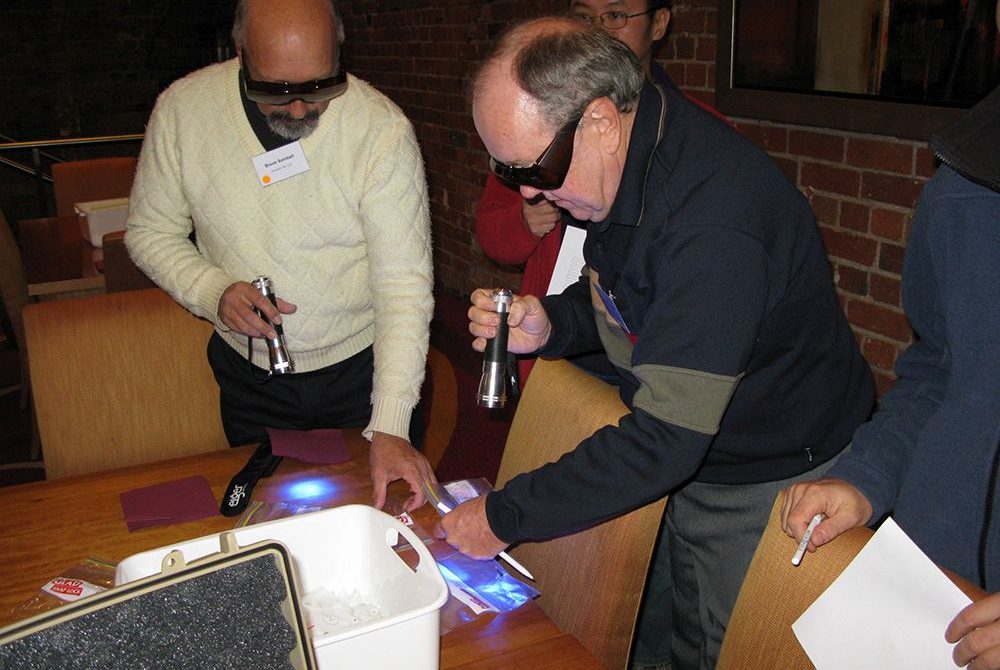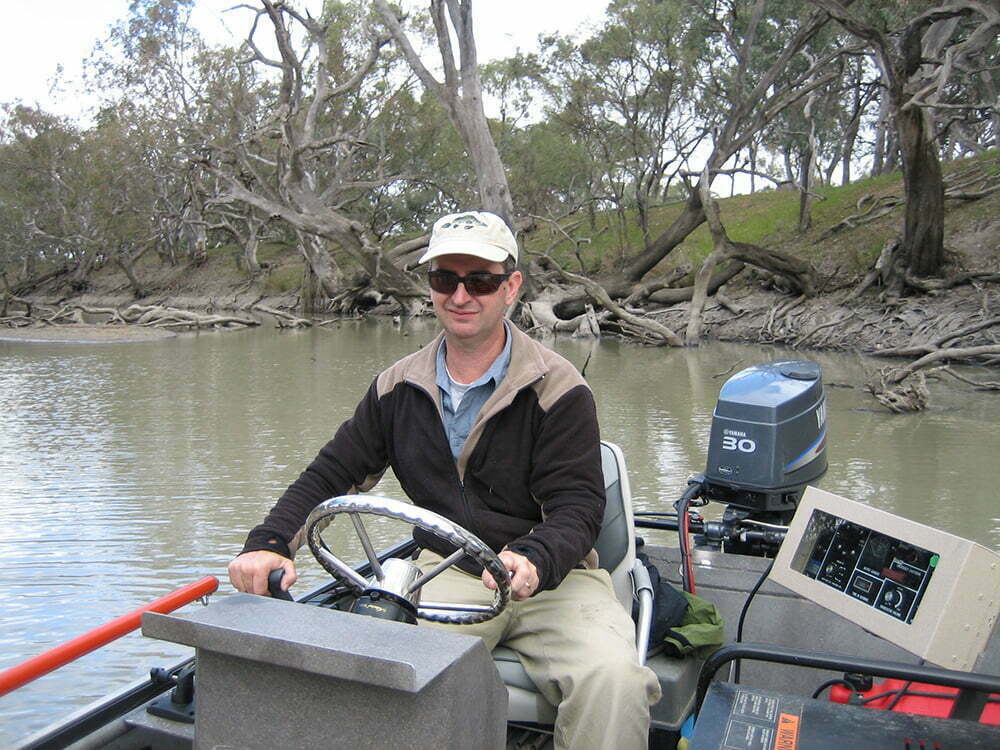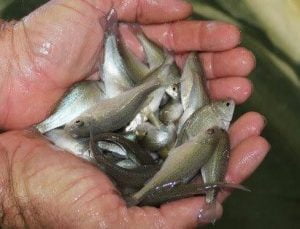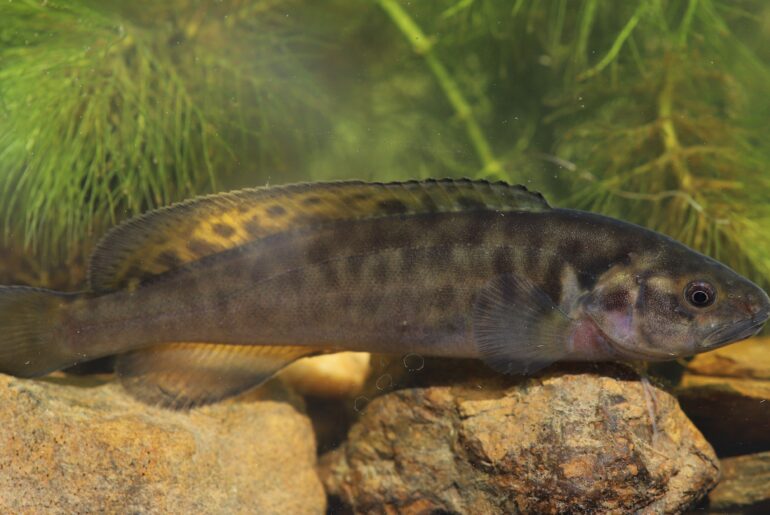Australian anglers have a love affair with fish stocking; in the Murray-Darling-Basin alone somewhere around 35 million native fish have been stocked since 2001. It’s easy to see why we like to stock so much…more fish in, more fish out, right? Well it turns out that is a more complicated question to answer than it might seem. Do stocked fish survive and enhance our fisheries? Or do they just provide a meal for resident predators? Do stocked fish supplement local fish stocks, or just compete with wild fish, suppressing and replacing natural recruitment? Some interesting research by a team of researchers from the Arthur Rylah Institute, NSW Industry and Investment and Adelaide University has been helping to shed some light on the subject.
A big challenge when trying to work out if stocking is having an impact, is how to tell a stocked fish from a wild fish. Most fish are stocked as fingerlings (20-50mm in length), at which size they are too small to be fitted with a conventional tag. However, these researchers have found some innovative ways to mark larval and fingerling fish, using non-harmful chemical dyes to enable stocked fish to be identified later on in life. Fingerlings or larvae were immersed in the dyes (the project team focussed mainly on a chemical called calcein), which creates a permanent mark or signature on the bony parts of fish. By marking stocked fish in this way prior to release, it was found that they could easily (and non-lethally) be distinguished from wild fish using a small hand-held device. One great benefit of Calcein marking is that marked fish were able to be identified through external examination for up to 2 years after stocking, and then released alive.

Most importantly perhaps, the marking techniques developed through this study have enabled these researchers to examine whether stocking is effective in changing fish populations in three rivers in the Murray-Darling Basin (Billabong Creek, Edward River, and the Murrumbidgee River). Golden perch were marked and stocked into these rivers, with follow-up surveys over the following five years to look at their contribution to fish populations.

So does stocking work?
Well… it depends. The results showed that at least some stocked fish survived to reach the legal minimum size in all three rivers. However the impact of stocking on fish populations were different for each river. Stocked fish in the Edward and Murrumbidgee Rivers were found to make up around 18-38% of fish caught from relevant age classes, whereas in Billabong Creek they comprised 100% of age classes corresponding to stocking years. This resulted in a fourfold increase in catch rates of golden perch in Billabong Creek, whereas catch rates in the other two rivers remained relatively unchanged.


Implications:
It should be pointed out that stocking probably contributed more to Golden perch populations in Edward and Murrumbidgee Rivers than this study revealed; examination of stocking records show that both sites had between 60,000and 156,000 unmarked golden perch stocked nearby from different hatcheries during the study period. As these fish weren’t marked it wasn’t possible to distinguish them from natural recruits, but it is reasonable to assume there were at least a few unmarked stocked fish in the mix.
So the evidence seems to indicate that stocking can help to supplement fish populations, but the benefits received can vary between locations. In talking with the project leader, David Crook about why stocked fish made up such a large proportion of the golden perch population present in Billabong Creek, he observed that Billabong Creek has a number of barriers to fish passage along its length, and that these barriers may be obstructing fish movement, and preventing young naturally recruiting golden perch from accessing areas sampled.
Stocking can definitely be a useful tool to help enhance fisheries, but is it the most efficient? In a presentation to anglers at the “Fishers for Fish Habitat” forum in Tamworth in May 2011, Dr Martin O’Grady, Senior Research Officer with Inland Fisheries Ireland compared the economic benefits gained from a stocking program versus a habitat rehabilitation program, citing two examples from the northern hemisphere. Both programs cost around 160,000 pounds (around $243,000 in real money), though one program focussed solely on stocking, whilst the other involved a program of habitat enhancement. The stocking program was found to enhance fish populations over 25 years at a cost of around 30 pounds per additional adult salmon (around $45). And for the habitat rehabilitation program? Two pounds, fourteen pence ($3.25) per additional adult salmon. In these two examples examined, rehabilitating habitat was a much cheaper way to improve the local recreational fishery, and also provided a number of other benefits, including a nicer looking river, and habitat for other local wildlife.

In reality there are a lot of instances where stocking and habitat rehabilitation will provide the best outcomes in terms of fishery enhancement. It’s just a matter of working out what is best for the places where you fish. Next time your fishing club are considering buying fish to stock in your local waterway, it might be a good idea to think about whether you will receive better outcomes through investing some of your effort towards improving the fish habitat there as well/instead? Does your local river need a fishway built to restore fish migration? Some snags or riparian habitat for shelter for fish? Or maybe some fencing to keep livestock out of the water and prevent erosion? Ultimately we all stand to benefit through better fishing.
Related stories:
120,000 Golden perch and silver perch released into Wallpolla Horseshoe Lagoon
Impacts of native fish stocking on fish within the Murray-Darling Basin




